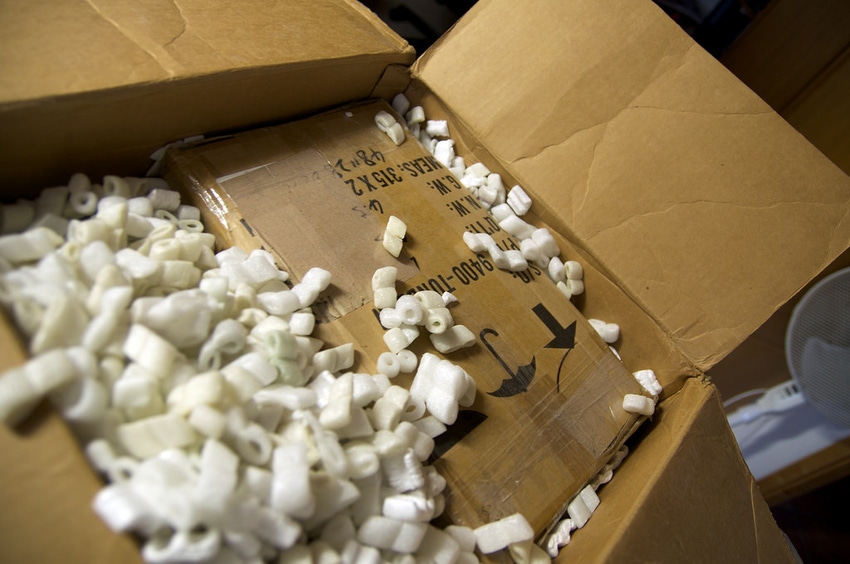How the new face of home delivery will transform packaging
July 23, 2016

A few years ago, in I piece I wrote about home delivery, I mentioned my childhood in North Wales where I made a bit of money delivering newspapers door to door. In fact, pre-Millennial U.S. children shared a similar rite of passage. Although we’ve said good-by to milk delivery and newspaper routes for a long time now, thanks in large part to the convenience of online shopping, at-home delivery is making a comeback. Just look around your neighborhood and you’ll see—in addition to Peapod trucks—everything from milk and dry cleaning to local grocers dropping off the week’s shopping. Calling it “The return of the milkman,” a recent Nielsen study asks, “Could the wave of the future be a blast from the past?”
Then and now
When I wrote on this subject in 2010, home delivery was led by Peapod in the U.S. and companies like Waitrose in the U.K. In France, La Petite Reine took home delivery a step further, serving the inner city with “cargo bicycles” and giants like DHL were just getting into the business.
My questions at the time were about how package design could accommodate online shopping and home delivery.
• Will online shopping for commodity items create a need for specific package designs for items sold online?
• What would these designs look like?
• Will home delivery create an opportunity for national brands to regain share they’ve lost to private label?
• If brands are competing on-shelf and online, will they be able to do less shouting and more “soft-sell” once the package is at the consumer’s door?
• Will brand owners be able to forge deeper connections with the consumer?
Packaging evolves with industry demand
Ever hear of smart labeling? You will. For quite a while, consumers, government and industry trade groups have been pressuring brands to reduce their carbon footprint and offer data on a range of things, from ingredients to provenance and more. The result has been a deluge of data on the package, leaving less and less space for iconic design elements that attract the consumer.
New technologies that align with smart phones are giving consumers the ability to open a portal to the internet just by pointing a phone at the product—whether on shelf or online. They’ll be able to see ingredients, get recipes, watch video content and more. In fact, this technology is already here, and for national brands and private brands alike, it’s evening the playing field. And it’s giving designers more room on pack—plus opportunities pre- and post-purchase—to engage with the consumer.
So who’s ordering online?
Internet sales are dominated by digital natives—Millennials and those born at the turn of the 21st Century known as “Generation Z.” They not only shop online, they price compare, search for locally grown produce and prefer to go from work to the yoga studio rather than waste time at the grocery store. According to a 2015 Nielsen study, 30% of Millennials (ages 21-34) and 28% of Generation Z (ages 15-20), say they’re ordering groceries online for home delivery, compared to only 17% of Baby Boomers. Younger people are also the most willing to use all of the ecommerce options in the future.
What are they buying?
Product selection plays a significant role in consumer habits when it comes to home delivery. There is a 60/40 split between non-food and food items respectively. When consumer shop in store, the exact opposite it true.
So how do brands lure shoppers now that they have so many channels? According a recent study from Profitero, “Mobile is everywhere. A good example is Google Buy Button, which makes it easier for people who are searching for products on their phone to buy them. There’s also a movement to Screenless Commerce, such as with Amazon Echo, which is Amazon’s version of Siri. It’s embedded into its own speaker and, besides telling it to play music, you can say ‘I need paper towels.’ It will use its algorithm to place an order based on its best guess or what type of paper towel you mean. It may match your recent order or it may pick a best seller, but in either, this is the type of ordering that is an outgrowth of mobile. Brands could have a fight on their hands figuring out how to outthink this one!”
Packaging design for home delivery
A recent survey from Dotcom Distribution focuses on the importance of the “unboxing experience.” It found the following: “52% of consumers are likely to make repeat purchases from an online merchant that delivers premium packaging.” It also found that “4 out of 10 consumers would share an image of an online delivery via social media if it comes in a unique package.” Says Maria Haggarty, CEO of Dotcom Distribution, “The act of online and social recommendations drives loyalty from your customers and promotes brand awareness.”
So what does this mean for product design?
Only five years after I first wrote on home delivery, we have a whole new set of questions to consider:
• How will you engage the consumer pre- and post-purchase?
• Will technologies like smart labeling become the norm? If so, who will win—early adopters or those who jump in after the kinks are worked out?
• Will the demand for organic make it harder to compete with shelf-stable products when it comes to home delivery?
Stay tuned.

Dyfed “Fred” Richards, chief creative officer and managing partner at Kaleidoscope, plays an integral role in the growth and evolution of the firm’s strategic creative vision, client service processes and business development efforts. With more than 20 years of experience in the branding and design industry at MLR Chicago, FutureBrand, Interbrand and most recently, The Brand Union, where he served as worldwide creative director of consumer branding, Richards has proven to be a client-centric and strategic resource.
************************************************************************************
Looking for inspiration for your next packaging design project? Visit MinnPack 2016 (Sept 21-22; Minneapolis) for the latest in packaging materials, equipment, automation and more.
About the Author(s)
You May Also Like


